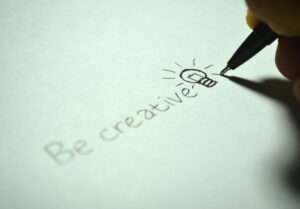How To Reduce Employee Stress And Boost Productivity Using The Arts

Many employers are already looking for ways to introduce nature, exercise and rest from screens into the day-to-day running of their operations, but one more surprising way to improve workplace mental health is through art.
Using The Arts To Reduce Employee Stress
Stress is a serious issue in the workplace, with the American Institute of Stress reporting that 75% of employees feel that workers have more stress at work than they did a year ago. Work is a major source of stress for adults, so it’s no surprise that successful businesses are constantly looking for ways to reduce workplace stress.
Music groups
A 2017 report published by the All-Party Parliamentary Group on Arts, Health and Wellbeing looked at the impact of the arts on overall health, which has prompted debate about the inclusion of the arts in workplace well-being policies. The report highlighted the success of artistic interventions in mental health management, including a study in which individuals with mild to moderate mental health problems joined group drumming sessions on a weekly basis.
During the sessions, stress was reduced significantly, and happiness and energy levels rose. Singing has been shown to have a similar effect, and these benefits can be transposed directly to the workplace simply by scheduling a once-a-week music session for employees. While it may seem like a distraction from the work, if stress levels are reduced and employees are actively engaged in a creative pursuit, the pay-off will be seen in motivation and productivity.
Drawing at the desk
On an individual level, drawing can be used to help employees manage their own stress. Research has shown that creating visual art can aid in stress reduction, as well as helping with problem-solving and creativity. Simply equipping each workstation with a sketchbook and drawing materials — and fostering a culture that encourages staff to take breaks when they need to — can allow individuals to use art to manage their own mental wellbeing.
Keeping resources on site that will help the creative process may encourage employees to make use of the strategy. For example, easy drawing tutorials that guide staff through the basics of drawing facial features or how to approach simple landscapes may empower those who are less confident about their artistic skills to put pen to paper.
Quiet crafting
Stitchlinks has been working with knitting as therapy in both community and clinical settings since 2006. A survey of over 3,5000 participants in the activity found that people reported feeling calmer and happier, as well as reporting higher cognitive functioning. Physical crafts like knitting can also help in pain management in chronic health conditions, and providing crafting materials for employees to use during their breaks could be of benefit to physical as well as mental health.
Using The Arts To Boost Productivity
Helping employees to manage their mental health and providing ways to destress during the working day is not only beneficial to workers — it makes for a more focused and productive workforce too. Music can synchronize the workforce and add a rhythm to the daily routine. Drawing can help visualize problems, processes, or streamline improvements. Quiet crafting activities can be easily incorporated into an office setting with minimal disruption to the environment, and could boost employee happiness and engagement significantly.
If you’re aiming to reduce employee stress in your business, consider including the arts in your workplace wellbeing policies. A growing body of research shows that creative pursuits can play a significant role in improving mental health, and by creating opportunities for staff to engage in this during the working week, you can expect to see improved productivity, reduced stress, and higher staff retention.















Leave a Reply